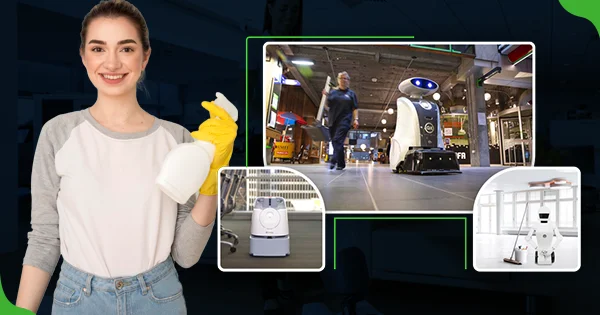Maintaining proper hygiene in food and beverage facilities is of utmost importance. The consequences of poor hygiene can be severe, leading to contamination and the spread of foodborne illnesses. To ensure the safety and well-being of employees and customers, it is crucial to prioritise hygiene in these environments. Food and beverage facilities are susceptible to contamination from a variety of sources. Pathogens such as bacteria, viruses, and parasites can easily find their way into the facility through improper handling of food, inadequate cleaning practices, or even through the air. Once inside, these pathogens can multiply rapidly and contaminate food, leading to the risk of foodborne illnesses.
Foodborne illnesses can have serious health consequences for those affected. Symptoms can range from mild discomfort to severe illness, and in some cases, can even be life-threatening. In addition to the health risks, outbreaks of foodborne illnesses can also have significant financial implications for businesses, including loss of customers, damage to reputation, and potential legal consequences.
Handwashing: The First Line of Defence Against Contamination
Handwashing is one of the most important steps in preventing the spread of pathogens in food and beverage facilities. Proper handwashing techniques and frequency are essential to ensure that hands are free from harmful microorganisms.
Hands should be washed thoroughly with soap and water for at least 20 seconds. This includes washing all surfaces of the hands, including the palms, backs, fingers, and nails. It is important to pay special attention to areas that are often missed, such as the fingertips and between the fingers.
Handwashing should be done at key times throughout the day, including before handling food, after using the restroom, after touching surfaces that may be contaminated, and after handling raw meat or poultry. It is also important to wash hands after coughing or sneezing into them or blowing one’s nose.
Sanitising: A Key Step in Preventing the Spread of Pathogens
It is another crucial step in preventing the spread of pathogens in food and beverage facilities. Sanitising refers to the process of reducing the number of microorganisms on surfaces to a safe level.
There are different types of sanitisers available, including chemical sanitisers, heat sanitisers, and UV sanitisers. Chemical sanitisers are the most used in food and beverage facilities. They work by killing or inhibiting the growth of microorganisms on surfaces.
It is important to choose the right sanitiser for the specific needs of your facility. Factors to consider include the type of surface being sanitised, the type of microorganisms present, and any specific regulations or guidelines that must be followed.
The Difference Between Cleaning, Sanitising, and Disinfecting
Understanding the distinctions between cleaning, sanitising, and disinfecting is essential for maintaining proper hygiene in food and beverage facilities. Cleaning refers to the removal of visible dirt, debris, and organic matter from surfaces. This can be done using soap, water or other cleaning agents. Cleaning alone does not kill or remove all microorganisms, but it is an important first step in the process.
Sanitising, as mentioned earlier, refers to reducing the number of microorganisms on surfaces to a safe level. This is typically done using chemical sanitisers or other approved methods. Disinfecting goes a step further than sanitising and involves killing or inactivating a higher percentage of microorganisms on surfaces. Disinfectants are typically more potent than sanitisers and are often used in healthcare settings or in situations where there is a higher risk of infection.
Choose the Right Cleaning and Sanitising Products for Your Facility
Choosing the right cleaning and sanitising products for your food and beverage facility is crucial for maintaining proper hygiene. There are several factors to consider when selecting these products.
First, it is important to consider the specific needs of your facility. This includes the types of surfaces that need to be cleaned and sanitised, the types of microorganisms that are present, and any specific regulations or guidelines that must be followed.
Second, it is important to choose products that are effective against the specific microorganisms that are of concern. Look for products that have been tested and approved by regulatory agencies such as the Environmental Protection Agency (EPA) or the Food and Drug Administration (FDA).
Finally, it is important to follow the manufacturer’s instructions when using cleaning and sanitising products. This includes using the correct dilution ratios, following recommended contact times, and ensuring that the products are used in a well-ventilated area.
Best Practices for Handwashing and Sanitising in Food and Beverage Facilities
Establishing standard operating procedures for handwashing and sanitising is essential for maintaining proper hygiene in food and beverage facilities. These procedures should outline the proper techniques and frequency for handwashing and sanitising. Employees should be trained on these procedures and should be regularly reminded of their importance. Training should include demonstrations of proper handwashing techniques, as well as information on when and how to sanitise surfaces.
It is also important to provide employees with the necessary tools and supplies to practice good hygiene. This includes providing access to handwashing stations with soap and water, as well as providing sanitising solutions and wipes for cleaning surfaces.
Training Employees on Proper Hygiene Practices
Employee training is a critical component of maintaining proper hygiene in food and beverage facilities. All employees should receive training on proper hygiene practices, including handwashing, sanitising, and cleaning procedures. Training should be incorporated into employee onboarding processes, as well as ongoing training programmes. This ensures that all employees are aware of the importance of hygiene and have the knowledge and skills necessary to practice good hygiene.
In addition to training, it is important to provide employees with regular reminders and updates on proper hygiene practices. This can be done through posters and signage in common areas, as well as through regular communication and reinforcement from management.
Maintaining Hygiene in High-Traffic Areas and Equipment
High-traffic areas and equipment in food and beverage facilities require special attention when it comes to maintaining hygiene. These areas and equipment are more likely to encounter contaminants and require more frequent cleaning and sanitising. Strategies for maintaining hygiene in high-traffic areas include implementing regular cleaning schedules, increasing the frequency of sanitising, and using barriers or protective coverings to prevent contamination.
Equipment should also be regularly cleaned and sanitised to prevent a buildup of dirt, debris, and microorganisms. This includes equipment such as cutting boards, knives, utensils, and food preparation surfaces.
Monitoring and Evaluating the Effectiveness of Your Hygiene Programme
Monitoring and evaluating the effectiveness of your hygiene programme is essential for identifying areas for improvement and implementing changes. This can be done through regular inspections, employee feedback, and testing for the presence of microorganisms. Regular inspections should be conducted to ensure that cleaning and sanitising procedures are being followed correctly. This includes checking that handwashing stations are properly stocked, that surfaces are being cleaned and sanitised regularly, and that employees are practising good hygiene.
Employee feedback is also valuable for identifying areas for improvement. Encourage employees to report any concerns or issues related to hygiene so that they can be addressed promptly. Testing the presence of microorganisms can provide valuable information about the effectiveness of your hygiene programme. This can be done through swabbing surfaces or conducting air quality tests. If high levels of microorganisms are detected, it may indicate that changes need to be made to your cleaning and sanitising procedures.
Prioritising Hygiene for Safe and Healthy Food and Beverage Operations
In conclusion, maintaining proper hygiene in food and beverage facilities is essential for ensuring safe and healthy operations. The risks of contamination and foodborne illnesses are significant, and the consequences can be severe. By prioritising hygiene and implementing proper handwashing, sanitising, and cleaning procedures, food and beverage facilities can reduce the risk of contamination and protect the health of employees and customers alike. Regular monitoring and evaluation of hygiene practices can help identify areas for improvement and ensure that the highest standards of hygiene are being maintained.
Ultimately, maintaining proper hygiene is not only a legal requirement but also a moral obligation to provide safe and healthy food and beverage operations. By investing in hygiene practices, businesses can protect their reputation, avoid costly outbreaks, and ensure the well-being of their employees and customers.










